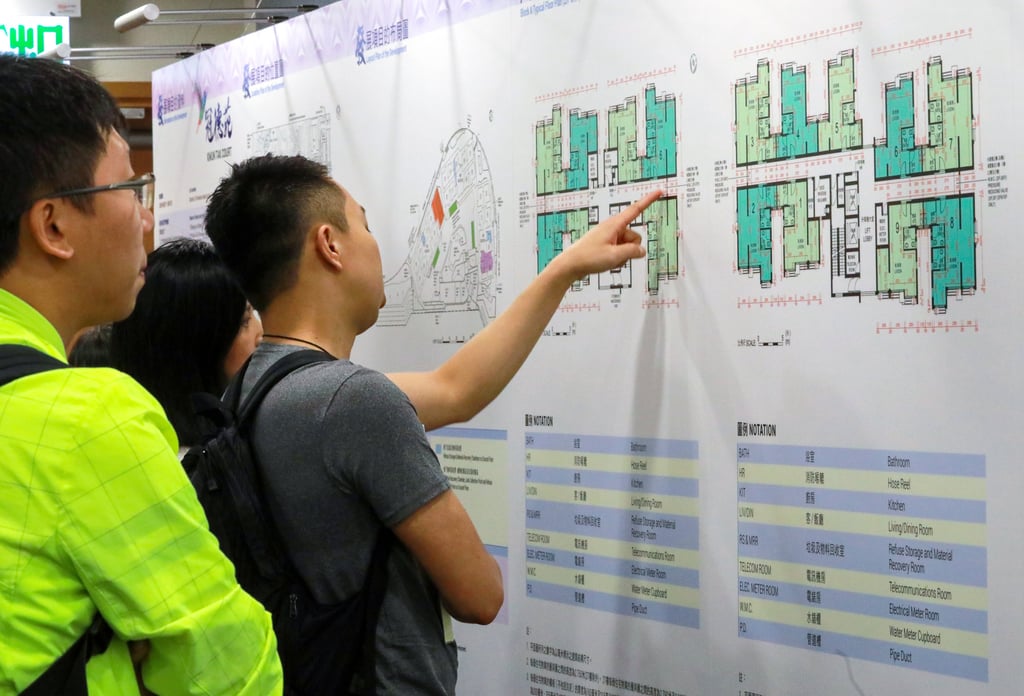Hong Kong’s housing authorities could adjust the proportion of public rental housing and subsidised flats from 70-30 to 50-50 in a bid to help young people buy homes, amid a growing trend of more educated singles applying for public rental flats at an early age.
Anthony Chiu Kwok-wai, a member of the Housing Authority and executive director of the Federation of Public Housing Estates, made the suggestion on Monday after officials recently repeated calls for young people not to “lie flat” by rushing to apply for subsidised rental homes.
“Lying flat” is a term that originated in mainland China that means doing the bare minimum to get by.
According to a survey by the authority, the number of non-elderly one-person applicants for public rental flats aged below 30 fell from 66,500 in 2017 to 38,600 in 2022.
But the poll also found that 52 per cent of these young singles had a tertiary degree or above, while 24 per cent had postsecondary qualifications and 23 per cent had completed secondary school.
“Some of these young people might apply for public rental housing before they graduate,” Chiu told a radio show on Monday. “But the possibility of them being allocated such a rental home is low.”
He argued it was difficult for young graduates to stick to a low salary for a long enough duration to remain under the income threshold required for rental home allocation.
The Housing Authority states that a single person applying for a public flat can earn no more than HK$12,940 a month (US$1,658), while the overall asset limit is HK$286,000.
The average age of non-elderly one-person applicants in public housing over the past five years was 57, while the youngest were in the 47 to 52 range, according to official data.
Chiu said to help young people buy their own homes, authorities could adjust the proportion of public rental housing and subsidised flats for sale from 70-30 to 50-50 in the future. He added this could start from 2029 or 2030, when the supply of housing in Hong Kong increased.
The government might also consider raising the proportion of subsidised second-hand flats allocated to singles, to boost home ownership among young people.

Ten per cent of subsidised flats are currently allocated to singles, and Chiu said the ratio could be raised to 20 or even 30 per cent.
Lawmaker Chow Man-kong said on the same show that young residents should strive to “move upwards”, while conceding room to do it was “a bit narrow”.
Chow said he believed the government’s extension of the mortgage default guarantee period from 30 years to 50 years, as well as the drop in property prices in recent years, would help young people climb the housing ladder.
“If young people start to queue up for public rental homes at 18 years old, they need to wait for at least 29 years,” Chow estimated, adding that attaining upward mobility in that way was obviously impossible.
He urged young people to fight for their future.
Authorities last month urged young people not to “lie flat” by applying for subsidised rental housing.
On Saturday, Director of Housing Rosanna Law Shuk-pui said authorities were considering a plan to help young people buy their own homes.
Lawmaker Wendy Hong Wen urged the government to increase the ratio of public rental and subsidised housing to 50-50 immediately.
“As the construction time of public housing, including subsidised flats, is usually five to seven years, it means the first batch of supply will be ready by 2035 at the earliest,” she said, adding that there was no time to wait for the increase in the supply of subsidised flats.
She warned that if the government did not encourage more upward mobility among the youth, the burden on society would become heavier.
“If young people cannot see the hope of climbing the property ladder, they have no motivation to work hard or give birth,” she said.


